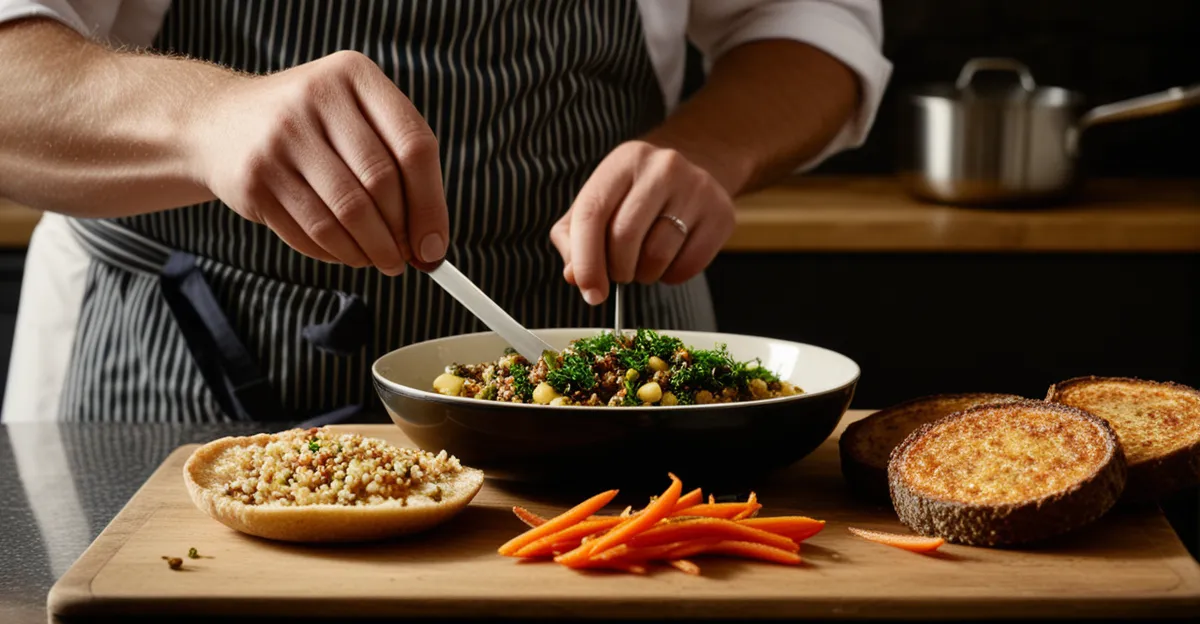Overview of the United Kingdom’s Cooking Evolution
Unpacking the rich tapestry of British culinary history
The history of British cooking reflects a diverse journey from simple, locally sourced meals to dynamic, globally influenced plates. The UK cooking evolution can be seen as flowing through distinct phases—each marked by shifts in society, economy, and external influences. Initially, cooking focused on hearty, staple ingredients such as root vegetables, grains, and meats shaped by the agricultural rhythms of the land. These basics provided sustenance and defined the foundation of culinary traditions.
In the same genre : What are some tips for preparing a classic toad in the hole?
As Britain expanded its global reach, international ingredients and techniques blended with local recipes, enriching the cuisine. For example, the influence of spices and new produce from overseas colonies gradually infused traditional recipes. Regional British culinary customs continued merging with broader cultural imports, resulting in a vibrant, hybrid food culture. This evolution demonstrates how British cooking continually adapts, combining time-honoured techniques with fresh, global inspirations—in line with the changing tastes and availability of ingredients.
The constant interplay of local and international factors makes the UK’s cooking evolution a compelling narrative of enduring tradition meeting innovative change.
Additional reading : What Traditional UK Dishes Can You Prepare In Less Than 30 Minutes?
Historical Foundations and Traditional Practices
Understanding traditional British cooking requires examining the interplay of local agriculture, staple ingredients, and regional variety. The history of British cooking is deeply rooted in the reliance on what the land produced—root vegetables like turnips and parsnips, grains such as barley and oats, and meats from domesticated animals. These ingredients formed the backbone of historic UK recipes that often emphasized simplicity and sustenance.
Regional British dishes highlight the diversity shaped by geography and climate. For example, coastal areas incorporated more fish, while northern regions favored hearty stews. Traditional cooking techniques involved slow roasting, boiling, and baking in hearths, reflecting the resources and technology available at the time.
Social hierarchy and trade also influenced culinary traditions. Upper-class households had complex dishes and imported spices, whereas rural communities focused on resourceful, filling meals. This blend of factors created a rich foundation of traditional British cooking that informed the subsequent phases of the UK cooking evolution, bridging the historical with the culinary identity evident today.
Influences of War, Industrialisation, and Imports
The British food history was profoundly shaped by the Industrial Revolution, wartime economies, and expanding global trade. Industrialisation introduced mass-produced ingredients and innovative kitchen tools, altering how families cooked and what ingredients they accessed. Factories and urbanisation shifted food availability from purely local sources toward ingredients sourced nationally and internationally, laying groundwork for modern supermarket systems.
During WWI and WWII, rationing affected every household, necessitating inventive wartime recipes UK families adapted to maintain nutrition with limited resources. Staples like potatoes, root vegetables, and preserved goods became central, while luxury items disappeared. These constraints influenced cooking styles, encouraging simplicity and creativity in everyday meals. Public dining and family meals evolved as governments promoted communal kitchens and efficient use of food.
The impact of industrialisation on food also extended to imported ingredients—colonial ties allowed continued access to exotic spices and tropical produce even in scarcity. This kept British culinary traditions flexible, blending historic simplicity with emerging global influences. Understanding these periods clarifies key transitions in the UK cooking evolution and illustrates how resilience and innovation shaped British cuisine.
Immigration, Multiculturalism, and Modern Flavours
Delving into the multicultural British cuisine reveals how diverse immigrant communities have deeply enriched the UK’s culinary landscape. The UK food immigration influence has introduced novel ingredients, spices, and cooking methods once unfamiliar to traditional British palates. For instance, South Asian, Caribbean, and Middle Eastern cuisines brought vibrant flavours and complex spice blends, gradually weaving into everyday British meals.
How did this shape modern cooking? The integration of international flavours UK has led to the creation of fusion dishes that maintain British roots but celebrate global tastes. Chicken tikka masala, often cited as a symbol of multicultural Britain, exemplifies how immigrant influences can blend seamlessly with historic UK recipes, epitomizing the ongoing UK cooking evolution.
Communities not only introduced new dishes but also expanded restaurant culture and popular food markets. This encouraged experimentation and acceptance of diverse diets, reflecting a broader social acceptance. Today, the vibrant mix of cuisines exemplifies how British cooking remains open to innovation while respecting its foundational culinary traditions. This dynamic fusion highlights the UK’s evolving palate as an ongoing dialogue between heritage and contemporary global cuisine.
Influential Chefs, Culinary Movements, and Media
Britain’s culinary landscape shaped by pioneers and popular culture
The UK cooking evolution owes much to iconic UK celebrity chefs who have redefined British cooking. Figures like Jamie Oliver and Delia Smith brought traditional and modern recipes into countless homes, emphasizing fresh ingredients and approachable techniques. Their influence helped demystify cooking, encouraging a broader public to reconnect with culinary traditions while embracing innovation.
This momentum coincided with the rise of gastropubs and artisanal producers, which elevated classic dishes by focusing on quality, locality, and presentation. British culinary trends increasingly value authenticity and craftsmanship, blending respect for heritage with creative flair.
Media also plays a crucial role. Food television and online platforms amplify trends, spotlight new ingredients, and showcase chefs’ philosophies. Shows inspire audiences to experiment with historic recipes updated for modern palates. This feedback loop between chefs, media, and consumers continues to drive the dynamic history of British cooking, nurturing both tradition and evolution in the UK’s ever-changing food culture.


